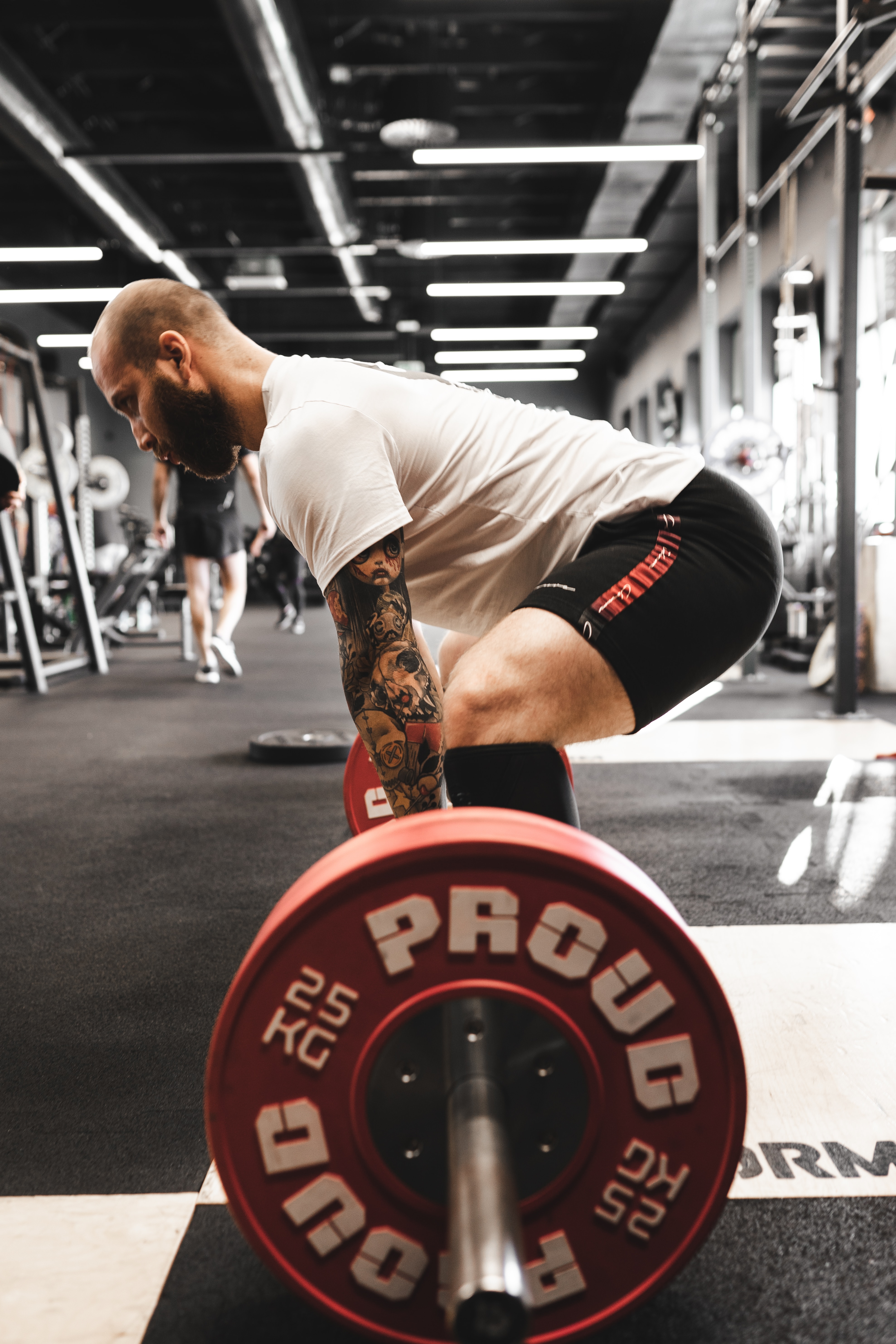Building muscle at the gym is a goal that many fitness enthusiasts share. We all want to feel strong, look toned, and improve our physical performance. However, the process of building muscle can be a challenging and complex journey. There are countless workout routines, diets, and supplements that claim to be the best for muscle growth, and it can be overwhelming to navigate through all this information. This comprehensive guide will provide you with the knowledge and tools needed to effectively build muscle at the gym, so you can achieve peak strength and power.
Before diving into the details of strength training and muscle growth, it is essential to establish a solid foundation of understanding. This includes recognizing the importance of proper strength training techniques, learning about the fundamentals of muscle growth and hypertrophy, and identifying the key components of an effective gym workout routine. By mastering these concepts, you will be better equipped to make informed decisions about your training and optimize your results.
In the following sections, we will cover essential topics such as the benefits of compound and isolation exercises, the role of nutrition and supplements in supporting muscle growth, and the importance of recovery and rest for optimal strength gains. Additionally, we will explore strategies for overcoming plateaus and continuously progressing in your training. Finally, we will delve into expert tips for effectively building muscle at the gym, so you can achieve your goals and unlock your full potential.
Importance of Proper Strength Training Techniques
Strength training is a crucial aspect of building muscle at the gym. By challenging your muscles with resistance, you stimulate growth and adaptation, leading to increased strength and size. However, it is important to note that not all strength training techniques are created equal. Proper form, technique, and programming are essential for maximizing your results and minimizing the risk of injury.
First and foremost, it is crucial to learn and practice proper form for each exercise in your workout routine. This means you should align your body correctly, engage the appropriate muscles, and move through a controlled range of motion. Improper form can not only limit your progress but also increase the risk of injury. Injuries can derail your training and significantly impact your ability to build muscle at the gym, so it is essential to prioritize proper form at all times.
In addition to form, you should also focus on proper lifting techniques. This includes employing progressive overload, which involves gradually increasing the resistance or intensity of your workouts to continuously challenge your muscles. By consistently challenging your muscles, you will stimulate growth and development. Another important technique is to vary your workouts to prevent plateaus and boredom. This can be achieved by changing the exercises, sets, reps, and rest periods within your routine.
Finally, it is essential to prioritize injury prevention by warming up properly before your workouts and incorporating mobility and flexibility exercises into your routine. This can help reduce the risk of injury and improve your overall performance in the gym.
“Building muscle is a testament to patience, dedication, and self-discipline; it’s a journey where the mind, body, and spirit unite to sculpt a stronger, more resilient version of ourselves.”
Fundamentals of Muscle Growth and Hypertrophy
Muscle growth, also known as hypertrophy, is the primary goal of building muscle at the gym. Hypertrophy is the process of increasing the size of your muscle fibers through a combination of mechanical tension, metabolic stress, and muscle damage. Understanding the fundamental principles of hypertrophy can help you design an effective workout routine and optimize your results.
Mechanical tension is the force exerted on your muscles when you lift weights. By progressively increasing the tension on your muscles over time, you can stimulate muscle growth and development. This can be achieved through exercises such as squats, deadlifts, and bench presses, which target multiple muscle groups and require high levels of tension.
Metabolic stress is the buildup of metabolites, such as lactic acid, in your muscles during exercise. This can lead to a burning sensation and fatigue, which can also stimulate muscle growth. Exercises such as high-rep sets and drop sets can increase metabolic stress and promote hypertrophy.
Muscle damage occurs when your muscles experience micro tears during exercise. This damage triggers the repair and growth process, leading to increased muscle size and strength. Exercises such as eccentric training, where you focus on the lowering portion of the lift, can increase muscle damage and promote hypertrophy.
By incorporating exercises that target all three of these mechanisms, you can maximize your muscle growth and development.
Designing an Effective Gym Workout Routine
Designing an effective gym workout routine is essential for building muscle and achieving your fitness goals. There are several key components to consider when creating your routine, including exercise selection, sets and reps, rest periods, and frequency.
Exercise selection is critical for targeting specific muscle groups and achieving balanced development. Compound exercises, which target multiple muscle groups, should form the foundation of your routine. These exercises include squats, deadlifts, bench presses, and chin-ups. Isolation exercises, which target specific muscles, can be used to supplement your routine and address any imbalances or weaknesses.
Sets and reps refer to the number of times you perform an exercise and the number of repetitions within each set. To promote hypertrophy, it is generally recommended to perform 3-5 sets of 8-12 reps for compound exercises and 2-3 sets of 10-15 reps for isolation exercises. This rep range provides an optimal balance of mechanical tension, metabolic stress, and muscle damage to stimulate muscle growth.
Rest periods refer to the amount of time you take between sets and exercises. For hypertrophy, it is recommended to take 60-90 seconds of rest between sets and exercises. This allows for sufficient recovery while still maintaining metabolic stress and muscle damage.

Frequency refers to how often you perform your workouts. For optimal muscle growth, it is recommended to train each muscle group 2-3 times per week, with at least one day of rest between workouts. This allows for sufficient recovery and stimulus for muscle growth.
By considering these key components and designing a well-rounded workout routine, you can effectively build muscle and achieve your fitness goals.
Compound Exercises for Maximum Muscle Development
Compound exercises are essential for maximum muscle development and overall strength. These exercises target multiple muscle groups and require high levels of mechanical tension, leading to significant muscle growth and development.
Squats are one of the most effective compound exercises for building lower body strength and size. They target the quads, hamstrings, and glutes and require a high level of tension to perform. Deadlifts are another essential compound exercise, targeting the posterior chain muscles, including the hamstrings, glutes, and lower back. They also require a high level of tension to perform and can promote significant muscle growth.
Bench presses are a staple compound exercise for building upper body strength and size. They target the chest, shoulders, and triceps and require a high level of tension to perform. Overhead presses are another effective compound exercise for building shoulder and triceps strength and size.
Chin-ups and pull-ups are essential compound exercises for building back and biceps strength and size. They target the lats, traps, and biceps and require a high level of tension to perform. Rows and lat pulldowns are also effective compound exercises for targeting the back and biceps.
By incorporating these compound exercises into your workout routine and progressively increasing the tension and intensity over time, you can achieve maximum muscle development and strength.
Incorporating Isolation Exercises for Targeted Growth
While compound exercises form the foundation of your workout routine, isolation exercises can be used to target specific muscles and address any imbalances or weaknesses. Isolation exercises are designed to isolate a single muscle or muscle group and can promote targeted growth and development.
For example, bicep curls are an isolation exercise that targets the biceps and can promote significant growth and development in this muscle group. Tricep extensions are another isolation exercise that targets the triceps and can promote significant growth and development in this muscle group.
Leg extensions and leg curls are isolation exercises that target the quads and hamstrings, respectively. These exercises can be used to supplement your compound exercises and promote balanced development in your lower body.
Calf raises are an isolation exercise that targets the calf muscles and can promote significant growth and development in this muscle group.
By incorporating isolation exercises into your workout routine and targeting specific muscles, you can achieve balanced development and promote targeted growth.
Nutrition and Supplements for Supporting Muscle Growth
Nutrition and supplements play a critical role in supporting muscle growth and development. Proper nutrition provides the building blocks for muscle growth, while supplements can enhance recovery and support optimal performance.
Protein is essential for building muscle, as it provides the amino acids needed for muscle repair and growth. It is recommended to consume 1-1.5 grams of protein per pound of body weight per day to support muscle growth. Good sources of protein include chicken, fish, beef, eggs, and dairy products.
Carbohydrates are also important for supporting muscle growth, as they provide energy for workouts and help replenish glycogen stores. Complex carbohydrates, such as brown rice, quinoa, and sweet potatoes, are the best choices for supporting muscle growth.
Healthy fats, such as those found in nuts, seeds, and avocadoes, are important for hormone production and overall health.
Supplements can also be used to enhance muscle growth and performance. Creatine is one of the most effective supplements for promoting muscle growth and strength. It works by increasing the amount of energy available to your muscles during high-intensity exercise. Whey protein powder can also be used to supplement your protein intake and support muscle growth.
By prioritizing proper nutrition and supplementation, you can support muscle growth and achieve optimal results in the gym.
Recovery and Rest for Optimal Strength Gains
Recovery and rest are essential for optimal strength gains and muscle growth. Without sufficient recovery, your muscles will not have enough time to repair and grow, leading to plateauing or even regression in your progress.
Rest days are essential for allowing your muscles to recover and repair after workouts. It is recommended to take at least one rest day per week and up to three rest days per week for more advanced lifters. On rest days, you should avoid intense exercise and focus on low-impact activities such as walking, yoga, or stretching.
Sleep is also essential for muscle growth and recovery. Aim to get 7-9 hours of sleep per night to support optimal recovery and performance in the gym.
In addition to rest and sleep, proper recovery techniques can also help support muscle growth and prevent injury. Foam rolling, massage, and stretching can all promote blood flow and aid in muscle recovery.
By prioritizing recovery and rest, you can optimize your strength gains and achieve your fitness goals.
Overcoming Plateaus and Continuously Progressing
Plateaus are a common occurrence in strength training and can be frustrating to overcome. However, there are several strategies you can employ to break through plateaus and continuously progress in your training.
One strategy is to increase the frequency, volume, or intensity of your workouts. This can help provide a new stimulus for muscle growth and prevent your body from adapting to your current routine.
Another strategy is to change up your exercises or rep ranges. This can help target different muscle fibers and promote new growth and development.
Finally, taking a de-load week, where you reduce the volume and intensity of your workouts, can help provide a break for your muscles and allow for recovery and growth.
By employing these strategies and continuously challenging yourself in your training, you can overcome plateaus and achieve your fitness goals.
Expert Tips for Effectively Building Muscle at the Gym
In addition to the strategies and techniques discussed above, there are several expert tips for effectively building muscle at the gym.
First, focus on progressive overload in your workouts. This means gradually increasing the resistance or intensity of your workouts over time to continually challenge your muscles.
Second, prioritize compound exercises in your routine, as they provide the most significant stimulus for muscle growth.
Third, prioritize recovery and rest to support optimal muscle growth and prevent injury.
Fourth, incorporate a variety of exercises and rep ranges to target different muscle fibers and promote balanced development.
Finally, be patient and consistent in your training. Building muscle takes time and dedication, but with the right approach, you can achieve your goals and unlock your full potential.
Mastering the Basics: A Comprehensive Guide to Muscle Building for Beginners
The Science Behind Muscle Recovery: Effective Strategies for Post-Workout Healing
Conclusion: Achieving Peak Strength and Power
Building muscle at the gym is a challenging and complex journey, but with the right approach, you can achieve peak strength and power. By mastering proper strength training techniques, understanding the fundamentals of muscle growth and hypertrophy, designing an effective workout routine, and prioritizing nutrition, supplements, recovery, and rest, you can effectively build muscle and achieve your fitness goals. By employing expert tips and continuously challenging yourself in your training, you can unlock your full potential and achieve peak strength and power.
Decoding Fitness: Exposing the Top 10 Fitness Myths
Unlock Your Mental Wellbeing: 10 Essential Tips for Improving Mental Health!





